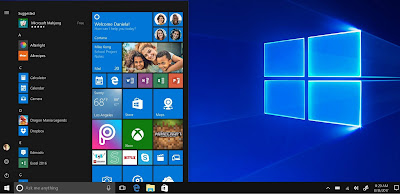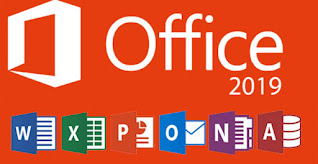How to Activate any version or edition of Windows 10.
How to activate your new Windows 10 For Free
Introduction for Windows 10.
Windows 10 is a Microsoft operating system for personal computers, tablets, embedded devices, and the internet of things devices.
Microsoft released Windows 10 in July 2015 as a follow-up to Windows 8. The company has said it will update Windows 10 in perpetuity rather than release a new, full-fledged operating system as a successor.
Anyone adopting Windows 10 can upgrade legacy machines directly from Windows 7 or Windows 8 to Windows 10 without re-imaging or performing intrusive and time-consuming system wipes and upgrade procedures. To upgrade from a previous version of Windows 10, IT or users run the Windows 10 OS installer, which transfers any applications and software on the previous OS, as well as settings and preferences over to Windows 10. Organizations and users can pick and choose how they will patch and update Windows 10. IT or users can access a Windows 10 upgrade through the Windows Update Assistant to manually begin an upgrade or wait for Windows Update to offer an upgrade when it is set to run.
Anyone adopting Windows 10 can upgrade legacy machines directly from Windows 7 or Windows 8 to Windows 10 without re-imaging or performing intrusive and time-consuming system wipes and upgrade procedures. To upgrade from a previous version of Windows 10, IT or users run the Windows 10 OS installer, which transfers any applications and software on the previous OS, as well as settings and preferences over to Windows 10. Organizations and users can pick and choose how they will patch and update Windows 10. IT or users can access a Windows 10 upgrade through the Windows Update Assistant to manually begin an upgrade or wait for Windows Update to offer an upgrade when it is set to run.
Windows 10 features built-in capabilities that allow corporate IT departments to use mobile device management (MDM) software to secure and control devices running the operating system. In addition, organizations can use traditional desktop management software such as Microsoft System Center Configuration Manager.
Windows 10 Mobile is a version of the operating system Microsoft designed specifically for smartphones.
Windows 10 featuresThe familiar Start Menu, which Microsoft replaced with Live Tiles in Windows 8, returned in Windows 10. Users can still access Live Tiles and the touch-centric Metro interface from a panel on the right side of the Start Menu, however.
Microsoft Windows 10 Continuum allows users to toggle between touchscreen and keyboard interfaces on devices that offer both. Continuum automatically detects the presence of a keyboard and orients the interface to match.
Windows 10's integrated search feature allows users to search all local locations, as well as the web simultaneously.
Microsoft Edge debuted with Windows 10 and replaces Internet Explorer as the default web browser. Edge includes tools such as Web Notes, which allows users to mark up web sites, and Reading View, which allows users to view certain websites without the clutter of ads. The browser integrates directly with Cortana, Microsoft's digital assistant, which is also embedded within Windows 10.
Cortana integrates directly with the Bing search engine and supports both text and voice input. It tracks and analyzes location services, communication history, email and text messages, speech and input personalization, services and applications, and browsing and search history in an effort to customize the OS experience to best suit users' needs. IT professionals can disable Cortana and some of its features with Group Policy settings.
Windows 10 security
Microsoft Windows 10 integrated support for multifactor authentication technologies, such as smartcards and tokens. In addition, Windows Hello brought biometric authentication to Windows 10, allowing users to log in with a fingerprint scan, iris scan, or facial recognition technology.
The operating system also includes virtualization-based security tools such as Isolated User Mode, Windows Defender Device Guard, and Windows Defender Credential Guard. These Windows 10 features keep data, processes, and user credentials isolated in an attempt to limit the damage from any attacks.
Windows 10 also expanded support for BitLocker encryption to protect data in motion between users' devices, storage hardware, emails, and cloud services.
Windows 10 system requirements
The minimum Windows 10 hardware requirements for a PC or 2-in-1 device are:
Processor: 1 gigahertz (GHz) or faster processor or system-on-a-chip (SoC)
RAM: 1 gigabyte (GB) for 32-bit or 2 GB for 64-bit
Hard disk space: 16 GB for 32-bit OS 20 GB for 64-bit OS
Graphics card: DirectX 9 or later with Windows Display Driver Model 1.0
Display: 800x600
The minimum Windows 10 Mobile hardware requirements for a smartphone are 1 GB RAM, 8 GB flash storage, a Trusted Platform Module, Unified Extensible Firmware Interface, 32 bits of color per pixel, and 720p screen resolution. Smartphones also require a Snapdragon SoC from Qualcomm Technologies.
Windows 10 upgrades
IT professionals and end-users have two options to upgrade from Windows 7 or 8.1 to Windows 10. One is by installing and running the Get Windows 10 application. The other is to use an image file with a designated group of settings and applications to upgrade to Windows 10.
When upgrading to Windows 10 from Windows XP, Microsoft only officially supports a clean install where nothing carries over from the previous OS. Application and hardware compatibility could be a problem with XP upgrades because the OS is so old.
Microsoft provides the Assessment and Planning Toolkit to help determine how ready existing systems and versions of Windows are for an upgrade.
Windows 10 updates
There are four licensing structures, called branches, that dictate how and when Windows 10 devices receive updates.
The Insider Preview Branch is limited to members of the Microsoft Insiders Program. With this branch, IT professionals get access to the latest Windows 10 updates before they are made available to the general public, which gives them more time to test out the newest features and evaluate compatibility.
Current Branch, which is designed for consumer devices, delivers updates automatically to any device running Windows 10 that is connected to the internet and has Windows Update on.
Current Branch for Business is an enterprise-focused option that is available for the Professional, Enterprise, and Education editions of Windows 10. It gives IT four months to preview the latest update and eight months to apply it. IT must apply the updates within the eight-month timeframe or it loses Microsoft support.
The Long Term Servicing Branch (LTSB), which is geared toward systems that cannot afford downtime for regular updates such as emergency room devices and automatic teller machines, gives IT the most control. With the LTSB, IT receives full OS updates every two to three years. IT can delay the update for up to 10 years. If IT does not update within 10 years it loses Microsoft support.
No matter which update branch an organization uses, security and stability updates, which patch security holes, protect against threats, and make sure the OS continues to run smoothly, still come on a monthly basis.
Windows 10 history and reception
Windows 8 offered a new touch-enabled gesture-driven user interface like those on smartphones and tablets, but it did not translate well to traditional desktop and laptop PCs, especially in enterprise settings. In Windows 10, Microsoft tried to address this issue and other criticisms of Windows 8, such as a lack of enterprise-friendly features.
Microsoft announced Windows 10 in September 2014 and the next month made a technical preview of the OS available to a select group of users called Windows Insiders. Microsoft released Windows 10 to the general public in July 2015. Overall, users and IT experts consider Windows 10 to be much more enterprise-friendly than Windows 8 because of its more traditional interface, which echoes the desktop-friendly layout of Windows 7. Improved performance over past versions of Windows, as well as effective search capabilities and the integration of Cortana, also helped the operating system gain support.
The Windows 10 Anniversary Update, which came out in August 2016, made some visual alterations to the taskbar and Start Menu. It also introduced browser extensions in Edge and gave users access to Cortana on the lock screen.
In April 2017, Microsoft released the Windows 10 Creators Update, which made Windows Hello's facial recognition technology faster and allowed users to save tabs in Microsoft Edge to view later.
The Windows 10 Fall Creators Update debuted in October 2017, adding Windows Defender Exploit Guard to protect against zero-day attacks. The update also allowed users and IT to put applications running in the background into an energy-efficient mode to preserve battery life and improve performance.
Windows 10 privacy concerns
Microsoft collects a range of data from Windows 10 users, including information on security settings and crashes, as well as contact lists, passwords, user names, IP addresses, and website visits.
So, if you got an idea, now let's proceed to activate it.
There are two easy methods;
First of all, you must disable your antivirus.
1)Open Notepad.
2)Paste the code provided below.
3) Save the file as a .bat file. 4) Run the file as administrator 5) Restart your PC and You're DONE!!!
@echo off
title Activate Windows 10 for FREE! TechiePaw.com&cls&echo ============================================================================&echo #Project: Activating All Verions of Windows 10 for FREE using CMD (TechiePaw.com)&echo ============================================================================&echo.&echo #Supported products:&echo - Windows 10 Home&echo - Windows 10 Home N&echo - Windows 10 Home Single Language&echo - Windows 10 Home Country Specific&echo - Windows 10 Professional&echo - Windows 10 Professional N&echo - Windows 10 Education N&echo - Windows 10 Education N&echo - Windows 10 Enterprise&echo - Windows 10 Enterprise N&echo - Windows 10 Enterprise LTSB&echo - Windows 10 Enterprise LTSB N&echo.&echo.&echo ============================================================================&echo Activating your Windows...&cscript //nologo slmgr.vbs /upk >nul&cscript //nologo slmgr.vbs /cpky >nul&wmic os | findstr /I "enterprise" >nul
if %errorlevel% EQU 0 (cscript //nologo slmgr.vbs /ipk NPPR9-FWDCX-D2C8J-H872K-2YT43 >nul&cscript //nologo slmgr.vbs /ipk DPH2V-TTNVB-4X9Q3-TJR4H-KHJW4 >nul&cscript //nologo slmgr.vbs /ipk WNMTR-4C88C-JK8YV-HQ7T2-76DF9 >nul&cscript //nologo slmgr.vbs /ipk 2F77B-TNFGY-69QQF-B8YKP-D69TJ >nul&cscript //nologo slmgr.vbs /ipk DCPHK-NFMTC-H88MJ-PFHPY-QJ4BJ >nul&cscript //nologo slmgr.vbs /ipk QFFDN-GRT3P-VKWWX-X7T3R-8B639 >nul) else wmic os | findstr /I "10 pro" >nul
if %errorlevel% EQU 0 (cscript //nologo slmgr.vbs /ipk W269N-WFGWX-YVC9B-4J6C9-T83GX >nul&cscript //nologo slmgr.vbs /ipk MH37W-N47XK-V7XM9-C7227-GCQG9 >nul) else wmic os | findstr /I "home" >nul
if %errorlevel% EQU 0 (cscript //nologo slmgr.vbs /ipk TX9XD-98N7V-6WMQ6-BX7FG-H8Q99 >nul&cscript //nologo slmgr.vbs /ipk 3KHY7-WNT83-DGQKR-F7HPR-844BM >nul&cscript //nologo slmgr.vbs /ipk 7HNRX-D7KGG-3K4RQ-4WPJ4-YTDFH >nul&cscript //nologo slmgr.vbs /ipk PVMJN-6DFY6-9CCP6-7BKTT-D3WVR >nul) else (echo.)
set i=1
:server
if %i%==1 set KMS_Sev=kms7.MSGuides.com
if %i%==2 set KMS_Sev=kms8.MSGuides.com
if %i%==3 set KMS_Sev=kms9.MSGuides.com
if %i%==4 goto notsupported
cscript //nologo slmgr.vbs /skms %KMS_Sev% >nul&echo ============================================================================&echo.&echo.
cscript //nologo slmgr.vbs /ato | find /i "successfully" && (echo.&echo ============================================================================&echo.&echo Site: TechiePaw.com&echo.&echo #How it works: bit.ly/kms-server&echo.&echo.&echo.&echo ============================================================================&choice /n /c YN /m "Would you like to visit my blog [Y,N]?" & if errorlevel 2 exit) || (echo The connection to my KMS server failed! Trying to connect to another one... & echo Please wait... & echo. & echo. & set /a i+=1 & goto server)
explorer "https://techiepaw.com/activate-windows-10"&goto halt
:notsupported
echo ============================================================================&echo.&echo Sorry! Your version is not supported.&echo.
:halt
pause >nul
Here’s the step-by-step tutorial
Now you need to follow the steps elaborately. You don’t need to worry, it’s dead simple! 

Open Notepad and paste the code.

I have provided the code you need to paste in Notepad. It will take you no longer than 30 seconds to copy-paste this code.
Save the file as a.BAT life.

The most crucial step is saving the file as a .bat file. Make sure you choose Save as type as All Files and also type .bat after your desired name.
I choose and you can choose anything you wish to. 

Run the .bat file as administrator.

Another most important step is running the file as admin. If you don’t do this, you’re likely to see errors when the Command Prompt processes the codes. So, make sure you have run this as an administrator.
Restart your computer.

You need to wait for about 10-15 seconds. Once you see the message which asks to restart your PC, you know it’s done. Simply type Y and press Enter.
Once you have restarted your computer, you no longer have to see that annoying activate Windows watermark. This is how you can activate Windows 10 without a key. 


Conclusion
One of the biggest benefits of activating your Windows 10 is that you can start customizing your desktop. I just hated that one Windows 10 theme so I follow these steps and just got the official activated Windows.
You also get rid of the watermark which is quite an annoyance, especially if you’re in-game. I am able to use all the Windows 10 features along with all the updates which are dope!
If you have a slow internet connection, you probably cannot download Windows 10 again, but there’s nothing to worry about. This will work on any version of Windows which is the best part. 

However, I strongly recommend downloading the official Windows 10 ISO from Microsoft which is absolutely free. You can try improving WiFi speed and I wrote a guide on that a few weeks ago.
Found this post helpful? Share this on Facebook and Twitter, and don’t forget to comment if you got any questions or problems. You can subscribe to post updates for free! 










Comments
Post a Comment